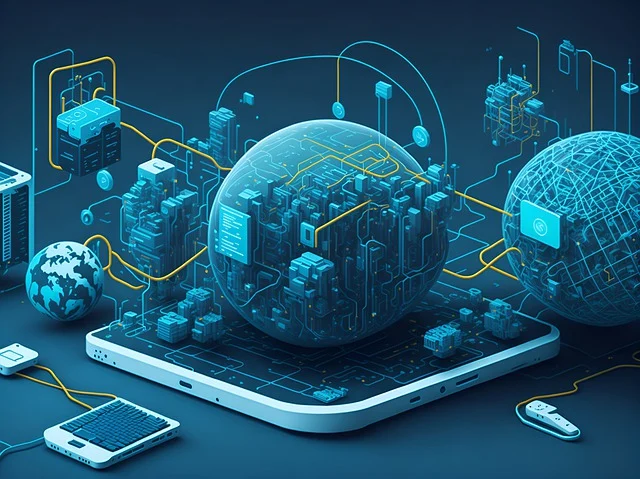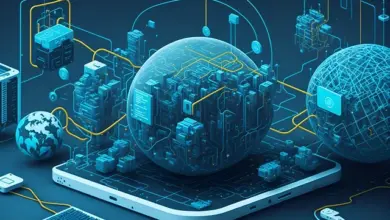
Introduction
In recent years, the global conversation around climate change, environmental sustainability, and energy conservation has reached unprecedented heights. At the heart of these discussions is the concept of green technology, often referred to as clean technology. Green technology encompasses a broad range of practices, technologies, and innovations designed to minimize the environmental impact of human activities. It is reshaping industries, communities, and economies around the world, offering a sustainable path forward in the face of pressing environmental challenges.
Green technology is not only a set of tools; it represents a shift in mindset toward sustainability and responsibility. From renewable energy sources to waste reduction methods, green technology is fundamentally changing how we live, work, and interact with our planet. In this article, we will explore how green technology is changing the world, its major components, and the impacts it is having on various sectors.
The Rise of Green Technology
The development of green technology has been driven by a combination of environmental necessity, economic innovation, and political will. Concerns about the depletion of natural resources, pollution, and the effects of climate change have made it imperative to find alternative solutions. Governments, organizations, and individuals are increasingly adopting green technologies as part of a global effort to combat these environmental issues.
The rise of green technology has been facilitated by advancements in science and engineering. With increasing investments in research and development, many green technologies that once seemed futuristic are now becoming mainstream. For example, solar and wind energy, once considered expensive and inefficient, are now among the fastest-growing sources of power in the world.
Key Components of Green Technology
Green technology can be categorized into several key areas, each playing a critical role in promoting environmental sustainability. Below are some of the major components of green technology:
1. Renewable Energy
One of the most significant sectors in green technology is the development of renewable energy sources. Unlike fossil fuels, which are finite and contribute heavily to pollution and greenhouse gas emissions, renewable energy sources like solar, wind, geothermal, and hydroelectric power are clean, sustainable, and abundant.
- Solar Energy: Solar panels harness energy from the sun and convert it into electricity. As solar technology has become more efficient and affordable, its use has expanded rapidly in both residential and industrial settings.
- Wind Energy: Wind turbines generate electricity by capturing wind currents. Wind farms, both onshore and offshore, are now a common sight in many countries, particularly those with large, open spaces or strong coastal winds.
- Hydropower: Dams and rivers are used to generate electricity in hydropower plants. Although this method has been around for decades, modern hydropower systems are increasingly designed to minimize environmental disruption.
- Geothermal Energy: This involves tapping into the Earth’s natural heat to produce electricity or heat buildings. Geothermal power plants are becoming a reliable energy source in areas with significant underground heat reserves.
These renewable energy sources are drastically reducing reliance on fossil fuels, decreasing carbon footprints, and providing a cleaner alternative for powering the world.
2. Energy Efficiency
Energy efficiency is another crucial component of green technology. It focuses on reducing energy consumption and optimizing the use of energy in homes, businesses, and industries. Energy-efficient appliances, lighting systems (such as LEDs), and smart technologies that monitor and control energy usage are examples of how energy efficiency is being integrated into everyday life.
In the industrial sector, technologies like cogeneration (combined heat and power systems) allow for the efficient use of fuel by capturing and reusing the heat generated during electricity production. This can significantly reduce waste and improve energy utilization.
3. Sustainable Agriculture
Green technology is also transforming agriculture through sustainable farming practices. Techniques such as precision farming use data, sensors, and advanced machinery to minimize water, fertilizer, and pesticide use, reducing environmental harm. Vertical farming, which involves growing crops in stacked layers or other vertical structures, maximizes land use efficiency and can significantly reduce the carbon footprint of food production.
Moreover, biotechnology is playing an essential role in creating drought-resistant and pest-resistant crops, which can reduce the need for chemical interventions and improve food security.
4. Waste Management and Recycling
Effective waste management and recycling systems are critical for reducing the environmental impact of human activities. Innovations in green technology have improved the efficiency of waste sorting, recycling, and repurposing processes. For example, modern recycling plants use advanced robotics and AI to sort waste more effectively.
Additionally, the concept of a circular economy is gaining traction. Instead of the traditional linear economy (make, use, dispose), a circular economy aims to keep materials in use for as long as possible through recycling, refurbishing, and reusing. This not only reduces waste but also lessens the demand for new raw materials.
5. Green Transportation
The transportation sector is a major contributor to greenhouse gas emissions, but green technology is helping to revolutionize how people and goods are moved. Electric vehicles (EVs) are becoming increasingly popular as an alternative to traditional gasoline-powered cars. Companies like Tesla and Nissan have spearheaded the development of affordable EVs, while many other automakers are transitioning to electric or hybrid models.
Public transportation is also benefiting from green technology through the use of electric buses, hydrogen-powered trains, and shared transportation models such as bike-sharing and electric scooters. These innovations contribute to a reduction in air pollution and help cities become more sustainable.
Impact of Green Technology on Key Sectors
1. Energy Sector
The global energy sector is undergoing a transformation as green technology becomes more widespread. The shift from coal and oil to renewable energy sources is not only helping reduce carbon emissions but is also creating new jobs in renewable energy industries. For example, jobs in solar panel installation and wind turbine maintenance have seen rapid growth as governments and private companies invest in clean energy infrastructure.
2. Agriculture
In agriculture, green technology has allowed for more efficient and sustainable farming practices, improving crop yields while minimizing environmental damage. Technologies such as drip irrigation and rainwater harvesting help conserve water, while the use of organic farming practices reduces the need for chemical fertilizers and pesticides.
The integration of data analytics, IoT (Internet of Things) devices, and AI in agriculture is also helping farmers optimize their operations by providing real-time insights into soil health, crop conditions, and weather patterns.
3. Manufacturing
The manufacturing sector has traditionally been one of the largest contributors to pollution, but green technology is helping industries adopt more sustainable practices. From energy-efficient machinery to the use of recycled materials in production, manufacturers are increasingly turning to green solutions to minimize waste and reduce emissions.
Green buildings, constructed using eco-friendly materials and designed to optimize energy use, are another important aspect of green technology in manufacturing. These buildings are often equipped with solar panels, energy-efficient heating and cooling systems, and water-saving technologies.
4. Urban Development
Urban areas are often the hardest hit by environmental challenges, including pollution and overcrowding. Green technology is playing a vital role in developing sustainable cities. Smart cities integrate green technology with data analytics to improve energy use, transportation systems, and public services. Green buildings, urban green spaces, and clean energy grids are all components of this transformation.
The Future of Green Technology
As green technology continues to evolve, it will likely play an even more central role in shaping the future of the planet. Continued investment in research and development will lead to more efficient and affordable solutions, making it easier for individuals, businesses, and governments to adopt sustainable practices.
The future of green technology also lies in greater collaboration between nations. Global efforts to address climate change, such as the Paris Agreement, highlight the importance of collective action. By sharing knowledge, technology, and resources, countries can work together to accelerate the adoption of green technology worldwide.



